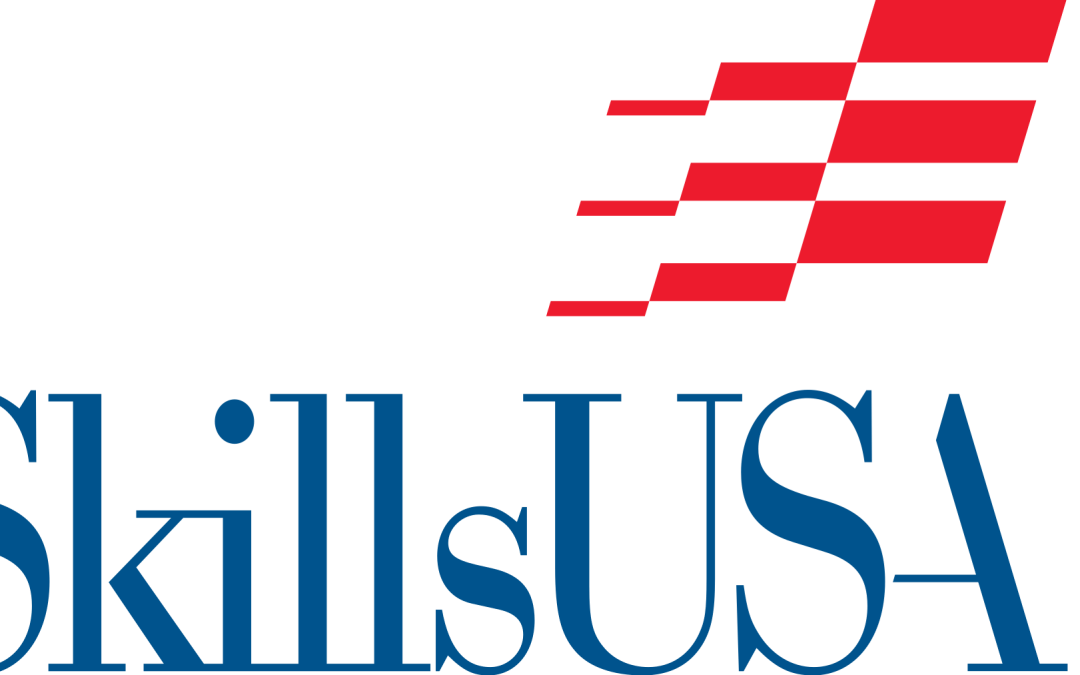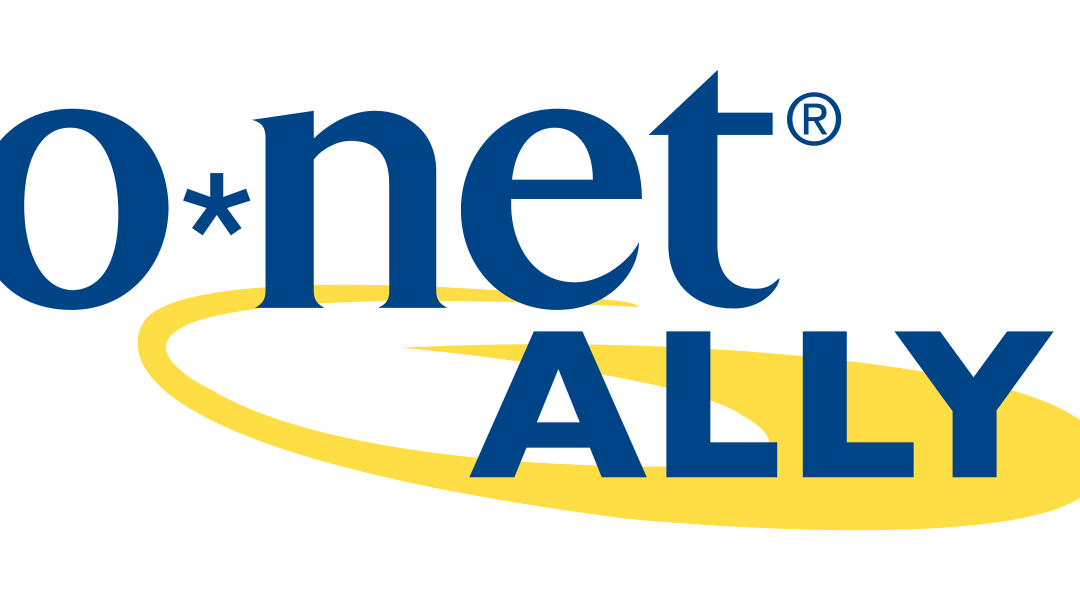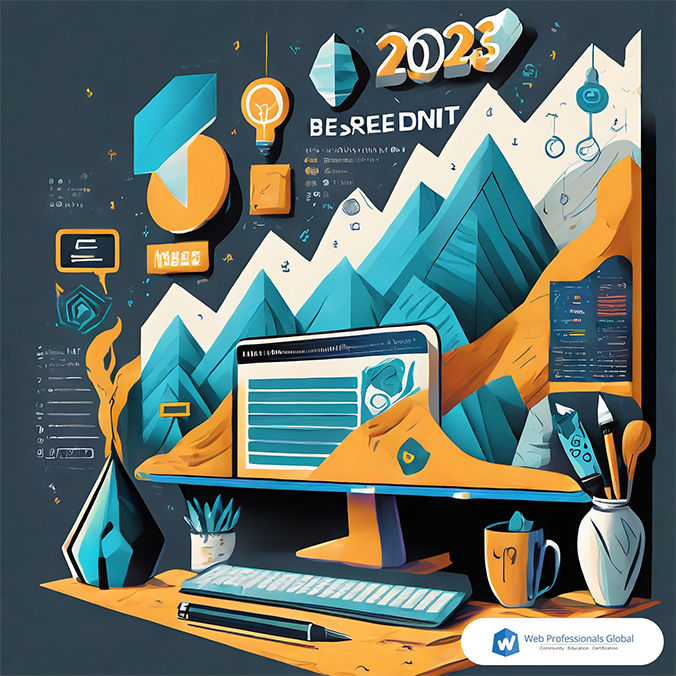
by Mark | Apr 24, 2024 | Web Accessibility
Global Accessibility Awareness Day, observed annually on the third Thursday of each May (May 16th in 2024), serves as a crucial reminder of the importance of accessibility in all aspects of life, especially in the digital realm. With the exponential growth of the internet and digital technologies, ensuring equal access to information and services has become more critical than ever. Web Professionals Global is proud to have a legacy of supporting accessibility efforts worldwide, and readers of this space know that we often highlight and discuss accessibility trends.
The internet has transformed how we access information, communicate, and engage with the world. However, for people with disabilities, navigating the web can be fraught with challenges. Web accessibility refers to the design of products, devices, services, or environments to be usable by people with disabilities. This encompasses various disabilities, including visual, auditory, motor, cognitive, and neurological impairments. The concept of accessibility extends beyond physical spaces to encompass digital platforms, including websites, applications, and digital content.
In this article, we’ll explore why World Accessibility Day is significant, particularly in the context of the web, and explore the challenges and opportunities it presents for building a more inclusive online environment.
Promoting Inclusivity
World Accessibility Day serves as a global platform to raise awareness about the importance of inclusivity. By highlighting the challenges faced by people with disabilities in accessing digital content and services, it fosters a collective effort to create a more inclusive society where everyone can participate equally.
Advocating for Equal Rights
Access to information is a fundamental human right. However, without proper accessibility measures, individuals with disabilities may face barriers in accessing vital information, educational resources, employment opportunities, and essential services. World Accessibility Day advocates for equal rights by pushing for policies and practices that ensure accessibility for all.
Empowering Individuals
Digital accessibility empowers individuals with disabilities by providing them with opportunities for learning, employment, social interaction, and civic engagement. Through accessible websites and technologies, people with disabilities can overcome barriers and fully participate in the digital age, thereby enhancing their quality of life and independence.
Driving Innovation
Embracing accessibility can drive innovation in design and technology. By prioritizing accessibility features, developers are compelled to think creatively and find innovative solutions that benefit not only people with disabilities but also the broader population. This fosters a culture of inclusivity and innovation, leading to better products and services for everyone.
Challenges in Web Accessibility
Despite the advancements in web technologies, many websites still fall short when it comes to accessibility. Common barriers include:
- Lack of alt text for images, making them inaccessible to screen readers used by visually impaired individuals.
- Poor color contrast, which can make content difficult to read for people with low vision.
- Inaccessible navigation structures, hindering users with motor disabilities from efficiently navigating the site. This includes link text with only a couple of characters pointing to the URL (it should be 7 characters or more).
- Absence of captions or transcripts for multimedia content, excluding deaf or hard-of-hearing users.
- Complex layouts and functionalities that pose cognitive challenges for users with intellectual disabilities.
Legal and Ethical Imperatives
Governments around the world are increasingly recognizing the importance of web accessibility and enacting legislation to ensure compliance. For instance, the Americans with Disabilities Act (ADA) and the Web Content Accessibility Guidelines (WCAG) set standards for web accessibility in the United States and globally, respectively. Failing to comply with these regulations not only exposes businesses to legal risks but also goes against ethical principles of inclusion and social responsibility.
Business Case for Web Accessibility
Beyond legal compliance, there is a compelling business case for investing in web accessibility. Accessible websites reach a broader audience, including people with disabilities, aging populations, and those using assistive technologies. This translates into increased customer engagement, improved user satisfaction, and enhanced brand reputation. Moreover, accessible design principles often lead to better search engine optimization (SEO) and usability for all users.
Leveraging Technology for Accessibility
Technology plays a pivotal role in advancing web accessibility. From screen readers and magnification tools to voice recognition software and alternative input devices, assistive technologies empower individuals with disabilities to navigate the web more effectively. Moreover, emerging technologies such as artificial intelligence (AI) and machine learning hold promise for automating accessibility testing and enhancing the user experience for people with disabilities.
Web Professionals Global is proud to support web accessibility and continue to work to ensure a more inclusive web for all. For more information on our work, please contact us today.

by Mark | Mar 31, 2024 | AI and Machine Learning, CSS3, HTML5, JavaScript, State of the Web, Web Accessibility, Web Security, WWW Desktop View
Spring is officially here (in the northern hemisphere). A lot has been happening both in the organization and the world of web technologies. Readers of this blog know we are in the midst of helping many states with their SkillsUSA web design and development competitions. Winners at the state level are then eligible to compete at the national level in June (in Atlanta). We are glad to be helping these states.
For those who suspect, the featured image was created with AI (Adobe Firefly in this case). Readers of this blog will also recall that all links will open in a new browser tab.
Web Technology Updates
- Accessibility trends – we found this overview of 7 accessibility trends to watch in 2024 an interesting read. Web accessibility testing will become more automated with greater reliance on AI (Artificial Intelligence). Personalized accessibility solutions and more integration of voice technology also top the list. We encourage you to review the article to learn more about these trends.
- CSS – Chris Coyier created a bookmarkable guide to a list of recent enhancements to CSS. We like the overview of these along with notes about when you should care and what browsers support these capabilities now. Working examples (which allow you to also view the code) are highly useful and helpful. Emphasis is on container queries, the :has( ) pseudo selector, View transitions, anchor positioning, and much more. We encourage readers to review and reference his article.
- Frontend Trends – Diego Petrecolla provided a solid overview of frontend trends for early 2024. This includes a nice overview of BFF (Backend for the Frontend) patterns, PWA (Progressive Web Apps), JavaScript and more.
- Web Development Trends – We found this informative article useful as it combines an overview of where these technologies came from (HTML, CSS, JavaScript) along with where they are going (use of AI in web development, voice search optimization, Web Assembly, and cyber security measures). Definitely a lot to think about as we move into the second quarter of 2024.
- Web Design Trends – Christopher Lara reviews 24 web design trends (since it is 2024, after all). From scrolling animations to claymorphism to dark mode to frosted glass effects to voice activated interface, there is a lot to unpack in this article.
- Cybersecurity trends of 2024 – Vera Cooper (Splashtop) provides an overview of many cybersecurity trends which are emerging in 2024. AI and machine learning top her list. IoT is a close second. Phishing attacks, mobile security, and much more are discussed in her article as well.
These are some of the articles/ trends we are watching evolve in 2024. What additional trends do you see? Let us know in the comments. We always look forward to insights from our members.

by Mark | Mar 20, 2024 | Web Competitions
Web Professionals Global is proud to once again support state SkillUSA web design and development competitions in 2024. This will be the third year we have helped states ahead of the national competition in June in Atlanta, GA. Before reading on, check out our article from 2022 outlining the new streamlined model we created so states could more easily run their own competitions.
SkillsUSA state competitions can be run in person or entirely online, making it easy for more students to join and participate in each state. Not only does the new approach make it easier for any state to run their own web design and development competition, but it also ensures that every state is conducting their own competition to prepare students for the national competition. This model gives all states the same turnkey resources to ensure a successful competition that engages students. We are seeing the tangible results of our efforts as states that utilize our support have been better prepared for the national competition in the summer.
What does the Web Professionals Global Competition pack include?
Competitor Support
- Online web design exam similar to what the competitors might see at nationals
- Competition project with client assets and judging rubrics
- Handouts for competitors with overview and links to resources
- Online development environment “IDE” for each competitive team
State Event Team and Judge Support
With easy access to competitor IDEs, judges can quickly judge the websites. Judge training videos aligned to the state level competition help them understand how to use the scoring rubric to judge similar to how the national event is judged. There is also a competition scoring rubric tied to the unique competition problem “The Work Order.” And national event team mentors access allows state-level event coordinators to get extra help running their state events.
“Web Professionals Global wants to thank all of the Web Design National Event team members who helped us build this year’s state competition package and support the state competition event teams.” – Mark DuBois, Executive Director of Web Professionals Global and Tech Chair for the National SkillsUSA Web Design and Development competition
Testimonials
Here are a few testimonials from organizers on state teams we have worked with in past years:
“The supplied client assets and coding environment were easy to use, and the collaborative piece between team members was invaluable for them to see real-time results. Mark and his team were invaluable in not only providing a real-time environment for students to code a website, but their attention to detail is impeccable. They are readily available to answer any questions and offered tips in advance to help the competition run as smoothly as possible. They made me feel much more comfortable knowing they were a phone call or email away. I would highly recommend using their product for any web design competition.” – Matt MacKay, WCSD Signature Academies & CTE Department, Nevada
Mark, your platform and contest is very well-designed and easy to use. The students truly loved competing in this contest! I can’t wait to see what you all have for nationals as well. It’s going to be wonderful! We thoroughly enjoyed the integration into this year’s contest and look forward to working with you again on next year’s contest!” – Renee Blackshear, Instructor, Statewide Faculty Senate, SkillsUSA Texas
2024 Schedule
Below is the schedule so far for the 2024 state competitions:
- Washington: March 22
- South Carolina: March 27
- Vermont: April 4
- Texas: April 6
- Nevada: April 11
- Florida: April 16
- Oklahoma: April 21-22
- Kansas: April 24-25
- Illinois: April 25
Visit here for more information on SkillsUSA state and local competitions. If you are interested in working with Web Professionals Global to run your own state web design and development competition, please contact us today.

by Mark | Feb 29, 2024 | CSS3, Social Media, WWW Desktop View
February (and a leap year no less). One extra day. Seems like an appropriate time to post my monthly desktop view. For those who already suspect, the featured image was generated by AI (Adobe Firefly in this case).
This is what we are reading and thinking about these days. As always, we look forward to your comments and insights.
Here are some articles we found interesting.
- CSS – Heydon Pickering posted a rather humorous (and insightful) article concerning utility-first CSS. Assuming readers are familiar with CSS, the article goes into great depth what seems to be happening with some frameworks. Not in a good way at all. But, a rather interesting read. Let us know what you think in the comments.
- In another article concerning CSS, Stephanie Stimac reviews the CSS property “field sizing.” Although this feature is a trial (you need to set the Experimental Web Platform features flag in Chrome or Edge), it seems to make a lot of sense. Particularly if you are trying to fill out a form and want the input field size to adjust with the content.
- Our colleague, Aaron Gustafson, posted an interesting article a couple months ago concerning sharing articles on social media without allowing them to be tracked. Lots of insightful information and useful examples. We really encourage you to review his article.
- For those teaching semantic markup, we thought you might find this article concerning the UX of HTML most interesting. Often, it is how we present a topic, isn’t it?
Ok, a relatively short synopsis of what we found interesting this month. Admittedly, there is much more we could discuss (and will in coming months).
2024 competitions starting soon
Right now, we are focused on our state and national web design and development competitions. They start in early March in conjunction with SkillsUSA. As always, we focus on helping competitors better understand why it is important to understand the problems they are being asked to solve for a particular business. They then need to provide an accessible, semantic, responsive, and workable solution for the client. This is what the judges will then review.

by Mark | Jan 29, 2024 | CSS3, HTML Web Components, JavaScript, WWW Desktop View
Web Professionals Global hopes that 2024 is off to a great start for everyone reading this post. It is hard to believe January is almost concluded. WOW! That being said, it is time to catch up on various aspects of what we have been investigating recently. Although we don’t specifically address AI in this post, the featured image was generated with Adobe Firefly. Let us know what you are keen to learn more about.
Here are our areas of focus for January:
- accessibility (always an important topic),
- CSS,
- HTML web components
- JavaScript
Accessibility
We noted the UK government is making changes to the design system to meet WCAG 2.2. For those needing a bit of a refresher – Web Content Accessibility Guidelines 2.2 was published in October, 2023 by the W3C. Many components are affected by this change (ranging from back links and breadcrumbs to tags). There are also changes to patterns to ask users to supply information and patterns to help users do things.There are also page pattern changes. We encourage you to review the article to learn more. Yes, this is the UK, but we are expecting these enhancements will ripple worldwide relatively soon.
CSS
Stephanie Stimac provides a great introduction to CSS media query for scripting support. With the release of Chrome 120 (November, 2023), this support is now available. “Simply, this media query allows you to test whether scripting language are available and tailor page content and styles depending on support.” Progressive enhancement has come a long way since we first started thinking about such concepts.
HTML Web Components
Zach Leatherman provides great insights via his Attempted Taxonomy of Web Components article. “These components layer on interactivity and add behaviors in true progressive enhancement fashion. This is the bread and butter use case of web components.” Of course, he expands significantly in the article and even discusses JavaScript web components. We encourage readers to check this article out. It is well worth reading.
For those who are not that familiar with HTML web components, perhaps the Web Components in Earnest article will help put things into better perspective.
JavaScript
During some recent internal discussions, I was reminded that we have not touched much on JavaScript and frameworks in a while. Of course, this discussion came up as part of our ongoing web design and development competitions. Hard to believe that we have been doing these competitions on the national stage for over 2 decades (and almost 2.5 decades in Illinois). Which got me to thinking – rather than discuss what is happening with ES and JavaScript, perhaps we should ask our readers for their opinions about the current state of JavaScript. Therefore, what are your thoughts about Vite? For readers unfamiliar, here is the why Vite development guide. How are you using this in your projects today? We look forward to your comments. Perhaps we will focus on additional projects in the coming months. A lot depends on the number of comments we receive *wink wink – now is the time to comment.*
Yes, there are many other articles we could have posted. However, we thought this mix would be a good introduction to what is happening with web technologies as we begin 2024. As always, we appreciate and look forward to your comments.

by Mark | Jan 25, 2024 | Employment Issues
Today we are highlighting an area of our work that many of our members might not be aware of – our continued involvement with O*NET. O*NET is a program in the Department of Labor’s Employment and Training Administration. The program is described as a “system maintained by a regularly updated database of occupational characteristics and worker requirements information across the U.S. economy. It describes occupations in terms of the knowledge, skills, and abilities required as well as how the work is performed in terms of tasks, work activities, and other descriptors.”
The O*NET program is the primary source of occupational information in the U.S. The O*NET database serves as the core of the project and includes hundreds of standardized and occupation-specific descriptors of almost 1,000 occupations covering the entire U.S. economy.
The O*NET database is collected and updated through continuous surveys of workers in various occupations supplemented in some cases by occupation experts. O*NET information is used by millions of people each year. Various O*NET applications include O*NET Online, My Next Move, and other publicly and privately developed apps. This data helps workers connect with training and job resources as well as employers looking for skilled workers.
Web Professionals Global helps identify occupational experts (typically our members) who are then surveyed to find out more about their training. We do so under our original name, the World Organization of Webmasters. Let’s look at some of the job descriptions our members have helped define over the years for the U.S. Department of Labor:
Our work on O*NET helps the Department of Labor stay up-to-date on job descriptions, thus allowing it to better serve college graduates and other job seekers.
Visit here for the latest O*NET updates and here for a full list of organizations that assist with data collection for job descriptions.
Get in Touch
Web Professionals Global’s involvement with the O*NET program enables members to help define these jobs so our certifications stay valid and current. If you are a web professional interested in becoming a member, or if you are a teacher or student who thinks our certifications can help your classroom, contact us today.

by Mark | Jan 4, 2024 | Employment Issues, Web Pro Education
In the landscape of Science, Technology, Engineering, and Mathematics (STEM), certifications have emerged as powerful tools that can shape and elevate one’s career trajectory. With the demand for skilled professionals in STEM fields at an all-time high, certifications offer a structured and focused path for individuals to acquire the knowledge, skills, and validation necessary to thrive.
At Web Professionals Global, we are proud to offer an array of professional certifications that prepare secondary, post-secondary and adult learners for future educational and career success. Our certifications are different from those that testing companies offer, which simply prepare students for a test. Our certifications are created and backed by industry professionals and recognized across both the U.S. and the globe. Students earn certifications by working through real concepts and building real-world projects, such as animation designs and video game designs. We also offer “stackable” opportunities in which students can earn multiple certifications with a single discipline (for example, web development) over time to build increasing levels of expertise. We are always happy to chat with teachers, students, and adults who feel like our certifications can help in the classroom or with professional development. For now, let’s look at a few ways in which our certifications are preparing our members for success.
Closing the Skills Gap
The STEM industry is characterized by its rapid pace of innovation and technological advancements. To meet the demands of this ever-evolving landscape, individuals need to continually update and enhance their skill sets. Certifications play a crucial role in addressing the skills gap by providing targeted and up-to-date training that aligns with industry needs.
Certification programs are designed to cover the latest technologies, methodologies, and best practices relevant to specific STEM disciplines. This ensures that individuals are equipped with the most current knowledge and skills demanded by employers, making them valuable assets in a competitive job market.
Specialized Expertise and Niche Proficiency
STEM careers often require specialized expertise in specific areas, and certifications allow individuals to develop niche proficiencies. Whether it’s web design, animation, video game design or mobile app development, certifications provide focused training that goes beyond the broad scope of traditional academic degrees.
These specialized certifications not only validate a person’s expertise but also serve as a clear signal to employers that the individual has invested time and effort to master a particular skill set. This targeted approach enhances an individual’s marketability, making them stand out in a crowded job market where employers increasingly seek candidates with precise, hands-on knowledge.
Industry Recognition and Validation
Certifications serve as tangible evidence of an individual’s competence and proficiency in a specific STEM field. As industry-recognized credentials, certifications carry significant weight with employers seeking to hire skilled professionals. Employers often view certifications as a reliable indicator of practical, real-world skills, which is crucial in a field where hands-on experience is highly valued.
For job seekers, holding relevant certifications like the ones offered by Web Professionals Global can be a differentiator that sets them apart from candidates without such credentials. Whether entering the job market or looking to advance within an organization, certifications provide a clear and standardized measure of one’s capabilities, increasing the likelihood of career success.
Career Advancement and Increased Earning Potential
In the competitive realm of STEM careers, continuous learning and skill development are key factors for career advancement. Certifications offer a structured pathway for professionals to upskill or reskill, positioning themselves for higher-level roles within their organizations.
Additionally, many employers recognize and reward employees who invest in their professional development through certifications. It’s not uncommon for certifications to be linked to salary increases, promotions, or access to more challenging and rewarding projects. The investment in certifications can yield substantial returns, both in terms of career progression and increased earning potential.
Adapting to Emerging Technologies
STEM fields are at the forefront of technological innovation, and staying abreast of emerging technologies is essential for career sustainability. Certifications from Web Professionals Global enable individuals to quickly adapt to new technologies and methodologies, ensuring they remain relevant and valuable in their respective industries.
Whether it’s mastering video game design, learning web development, or becoming proficient in digital animation, certifications offer a streamlined path for individuals to acquire cutting-edge knowledge. This adaptability is crucial in a landscape where technological advancements can reshape industries overnight.
Building a Network and Community
Certifications from Web Professionals Global offer more than just a piece of paper. Our members are part of a rich community of technology professionals from around the world in countries including Italy, Nigeria, Switzerland, Bahrain, the Philippines, and more. This sense of community goes beyond the classroom or online learning platform, providing our members with valuable networking opportunities. Connecting with peers, mentors, and industry experts through certification programs can open doors to collaboration, mentorship, and job opportunities. Networking with other Web Professionals Global members who have similar certifications can lead to insights, job referrals, and a deeper understanding of industry trends and opportunities.
Meeting Industry Standards and Compliance
In certain STEM sectors, adherence to industry standards and compliance is non-negotiable. Certifications often include components that ensure individuals are well-versed in industry standards, regulations, and best practices. This is particularly critical in fields like cybersecurity, where compliance with security standards is paramount.
Certified professionals are not only equipped with the technical skills necessary for their roles but also possess an understanding of the regulatory landscape. This dual competency is highly valued by employers and regulatory bodies, contributing to a professional’s effectiveness and the overall integrity of their work.
Conclusion
In the dynamic and competitive landscape of STEM careers, certifications emerge as powerful catalysts for success. They bridge the skills gap, provide specialized expertise, offer industry recognition, enable career advancement, increase earning potential, facilitate adaptability to emerging technologies, build professional networks, and ensure adherence to industry standards. Reach out to us today to hear more about our certification programs and how you can join our ranks at Web Professionals Global.

by Mark | Dec 18, 2023 | Industry News, State of the Web, Web Pro News, Web Professional Trends
As we look back at the digital landscape of 2023, the world of web design and development continues to evolve at a rapid pace, ushering in a new era of innovation and creativity. The team at Web Professionals Global has been fortunate enough to see many of these changes up close. This year, designers and developers have pushed boundaries and redefined user experiences. In this article, we’ll explore the trends that have dominated the web design and development scene in 2023.
As a member, you have access to specific links with all thee articles (providing much more detail). Members should view this linked page for access to all those details. If you are not a member, you will be directed to the join page (members should login first).
Immersive and Interactive Experiences
Web designers are increasingly focusing on creating immersive and interactive experiences to captivate users. With advancements in WebGL and 3D graphics, websites are now offering dynamic and engaging content. From interactive storytelling to product showcases, the web is becoming a more interactive and visually stunning space.
Augmented Reality (AR) Integration
The integration of augmented reality into web design has gained momentum in 2023. AR elements enhance user engagement by overlaying digital information onto the real world. From virtual try-on experiences for e-commerce to interactive educational content, AR is reshaping how users interact with websites.
Dark Mode Dominance
Dark mode has transcended from a trend to a design standard. Offering a sleek and modern aesthetic, dark mode not only reduces eye strain but also conserves device battery life. Major websites and applications are embracing dark mode as a default or optional theme, providing users with a more personalized browsing experience.
Voice User Interface (VUI) Implementation
Voice technology has become more sophisticated, leading to the integration of voice user interfaces in web design. Websites are adopting voice search, commands, and navigation, making it more convenient for users to interact with content hands-free. This trend reflects the growing importance of accessibility and user-friendly interfaces.
Minimalistic and Functional Design
Minimalism continues to be a key design philosophy, with a focus on simplicity and functionality. Clean layouts, ample white space, and intuitive navigation are essential components of modern web design. Striking the right balance between aesthetics and usability, designers are creating seamless and clutter-free digital experiences.
AI-Powered Personalization
Artificial intelligence is playing a pivotal role in web development by enabling personalized user experiences. AI algorithms analyze user behavior and preferences to deliver tailored content, recommendations, and even dynamic website layouts. This level of personalization enhances user engagement and satisfaction.
Blockchain Integration for Security
With an increasing emphasis on cybersecurity, blockchain technology is making its mark in web development. Blockchain provides enhanced security and transparency, making it a valuable addition to websites dealing with sensitive data. This trend is particularly prevalent in e-commerce, finance, and healthcare sectors.
Progressive Web Apps (PWAs)
Progressive Web Apps continue to gain popularity due to their ability to provide a seamless user experience across devices. Combining the best of web and mobile applications, PWAs offer faster load times, offline functionality, and push notifications, enhancing user engagement and retention.
Wrap-Up
In the ever-evolving landscape of web design and development, 2023 has been a year marked by innovation, user-centric experiences, and the integration of advanced technologies. From immersive designs and augmented reality to the widespread adoption of dark mode and AI-driven personalization, these trends collectively shape the digital experiences of users worldwide. At Web Professionals Global,we are excited to continue supporting web professionals around the world and see where the industry goes in 2024. Reach out to us today to find out more about our mission of “Community, Education, Certification.”
If you want more details about any of the above information, please view this linked page (members only – be sure to login first).

by Mark | Dec 7, 2023 | AI and Machine Learning, CSS3, Industry News, JavaScript, Web Accessibility
As 2023 draws to a close, we thought it would be helpful to share some of the articles we have been reading. We have tried to focus on a handful of articles (covering the categories below). As we have noted on previous articles, all links will open in a new browser tab/ window.
Artificial Intelligence
As readers are well aware, the pace of change in AI is hard to fathom. This article summarizes what we should be looking for in late 2023 and early 2024. Perhaps we will look back at this article in mid-2024 and see how the predictions fared.
As you may suspect, the “featured image” accompanying this post was generated by Adobe Firefly.
Accessibility
Web Content Accessibility Guidelines (WCAG) 2.2 were released on October 5. There are many aspects to consider. We found Craig Abbott’s analysis most helpful (this is definitely worth a read).
CSS
If you are even a little curious where CSS might be heading, we encourage you to review Eric Meyer’s article concerning Nuclear Anchored Sidenotes. Of course, you will need a fairly recent version of the Chrome browser with the “experimental web features” option enabled if you want to try out his examples.
JavaScript
JavaScript continues to evolve as well. Here is a good article concerning new features for 2023 and expectations for 2024. Some of the main features discussed including the ability to change an array by copy without mutating the original array. One can also find within an array starting at the end and working backwards.
WordPress
WordCamp US concluded several months ago. However, these presentations provide an overview of many insights provided at this venue. Of course, the annual keynote address by Matt Mullenweg (State of the Word) is scheduled for December 11 (from Spain). We are definitely curious what will be covered in that keynote.
Feedback please!
It has been a few months since we have posted a “desktop view” article. Do you enjoy reading these articles? What other topics would you like to see us cover (to learn more about)? Please let us know in the comments.

by Mark | Nov 29, 2023 | Employment Issues, Industry News
In recent years, we have frequently discussed the rise of remote and hybrid work. As a global organization, we aim to keep members and readers updated on trends happening around the globe that affect the world of the web. Today, we are highlighting a recent development in the United Kingdom that will likely impact how people work not only in the UK but globally as well.
In a November 22 policy announcement, the UK government said that individuals grappling with mobility and mental health challenges may soon find themselves compelled to work from home or risk losing vital benefits under the “Chance to Work Guarantee.” This program, introduced by the Department for Work and Pensions (DWP), is aimed at removing barriers to work for millions of people currently out of work. As part of the plan the DWP will also provide targeted help as part of its £2.5B ($3.1B) Back to Work Plan, including through an expanded program that places people into jobs and provides support to give the best chance of success in a role.
UK Prime Minister Rishi Sunak describes this effort as encouraging people to fulfill “their duty,” as he deemed the current welfare system “unsustainable.” Under the proposed changes, hundreds of thousands of disabled people could face a reduction in benefits of £4,680 (approximately $5,910) annually unless they actively seek remote employment.
In the past few years, the number of people working remotely in the UK has risen significantly. 40% of workers reported working from home in the winter of 2023, compared to 12% in the winter of 2019. Over 20% of 8 million online job ads between April and October 2023 were remote or flexible, up from less than 4% in 2016.
Although it is too early to tell exactly what impact this new policy will have, it is clear that in the coming months and years more people in the UK will need to be equipped with the skills and tools to work remotely. It is also likely that other countries will soon follow the UK and implement their own policies that encourage those on benefits to seek employment from their homes.
Even if you are not disabled, learning how to successfully work on a remote and hybrid basis is extremely valuable. The landscape for work is constantly shifting, and many companies are still utilizing remote work policies that were implemented during the COVID-19 pandemic.
Web Professionals Global offers the Certified Remote Working Professional (CRWP) course and certification to help those transitioning to the world of remote (and hybrid) work. This comprehensive program not only equips you with the skills to become an expert remote worker, but also empowers you to stand out from your peers in the competitive job market. The bonus Interview Preparation and Freelancer Preparation modules are designed to teach you remote and in-person interview skills as well as how to work as a freelancer or independent contractor.
At the end of the course, you will have earned your Remote and Hybrid Working Certification from Web Professionals Global. This globally-recognized certification was created by industry professionals who have worked remotely and on a hybrid basis for many decades, ensuring that your newfound skills receive recognition on a global scale.
For more information on our Certified Remote Working Professional (CRWP) course and certification, or to chat with us about our work, contact us today at membership@webprofessionalsglobal.org.










